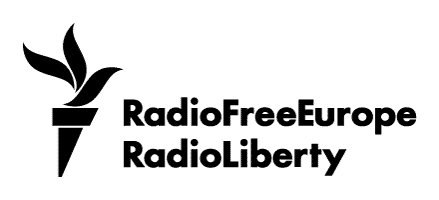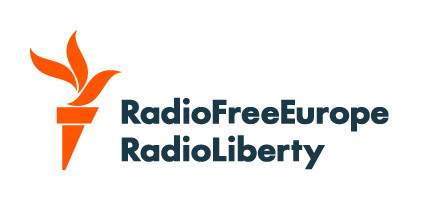
Welcome to Wider Europe, RFE/RL's newsletter focusing on the key issues concerning the European Union, NATO, and other institutions and their relationships with the Western Balkans and Europe's Eastern neighborhoods.
I'm RFE/RL Europe Editor Rikard Jozwiak, and this week I'm drilling down on my recent interview with NATO Secretary-General Mark Rutte.
A Conversation With NATO Secretary-General Mark Rutte
On November 24, I conducted a lengthy interview with NATO Secretary-General Mark Rutte.
Our conversation touched upon Ukraine as it heads into a critical phase of both the war with Russia and international diplomacy to conclude the fighting.
It also covered other topics, such as NATO-Russia relations, the US troop posture on NATO’s eastern flank, and Georgia and Serbia’s growing ties with China.
A Crucial Week For Ukraine
Initially, I was supposed to have spoken to Mark Rutte in Prague earlier this year. Back then, the former Dutch Prime minister had to cancel due to an urgent meeting of the Franco-British “Coalition of the Willing” – a loose grouping of Western countries aiming to provide more military support for Ukraine.
This time, it looked likely that the interview would be postponed once more.
A few days prior, news broke about a US-authored 28-point plan to stop the war in Ukraine.
The document appeared to catch at least Kyiv’s European allies off guard, and many thought the document looked like a Kremlin “wish list,” as Russia would gain additional Ukrainian territories, Ukraine’s army would be capped, Moscow would be welcomed back into the G7 group of leading industrialized nations, Western sanctions would be gradually lifted, and an amnesty would be granted for war crimes.
The Europeans quickly started to draft more “Ukraine-friendly” counterproposals.
Heading into the weekend, Ukrainian President Volodymyr Zelenskyy addressed his nation, admitting that Kyiv faced a difficult choice, potentially losing a key partner in the United States or betraying some of the country’s key principles.
This was before US and Ukrainian diplomats gathered in Geneva to try to hash out details of the plan with rumors that Zelenskyy might head to the United States for direct talks with President Donald Trump before the Thanksgiving long weekend later this week.
Despite this and with days full of phone calls -- including to the US and Ukrainian Presidents -- the head of the military alliance found time to speak to us.
28-Point Plan Forms 'A Basis'
So, what did he make of the 28-point proposal?
“I'm not going through every line of that plan,” Rutte repeated more than once during the talk but added: “obviously some of the elements have to be really thought through. But what you've seen yesterday [November 23] in the meeting in Geneva that as a basis it helped to bring Ukraine and the US very close on the way forward.”
Being known as one of few European leaders who truly has Trump’s ear, the Dutchman was keen to show that he shares the same vision as the US president when it comes to a final outcome: “the end state has to be -- and this is what Donald Trump has been working on since February -- is a sovereign Ukraine going forward, a strong nation, and Russia never trying again to attack it. That's what we are trying to achieve -- all of us.”
But how this will be achieved still needs to be worked out.
Rutte believes that a combination of a strong Ukrainian Army, the Coalition of the Willing, and US security guarantees can do the trick, even if he skirted around the subject of whether troops from NATO countries will be stationed in the war-torn country after a potential cease-fire or peace plan.
Referencing his many years as Dutch prime minister, he also outlined what he thought was needed to get Moscow to stick to the deal.
“I know one thing about the Russians in general and Putin specifically,” he said. “Whenever you make an agreement, you have to make sure it is in his interest to keep to it. So that's why it is so important that whenever a peace deal is reached on Ukraine, that he will never try again. And he will never try again when he knows that the consequences for him will be devastating if he tries to invade Ukraine again after a long-term cease-fire or a preferably a peace deal.”
NATO-Russia Council Is 'Dead'
While this has to be worked out, Rutte did offer more clarity on two issues pertaining directly to NATO which were mentioned in the plan: future NATO-Russia relations and Ukraine’s chances of one day joining the alliance.
The 28-point plan envisages NATO and Russia having a dialogue on all security issues going forward.
This previously happened in the NATO-Russia Council, which last met before the full-scale invasion of Ukraine in February 2022. The council, in turn, was created with the inking of the NATO-Russia Founding Act in 1997.
Rutte, however, dismissed the idea that that either of these bodies could be resuscitated.
“These things are dead,” he said. “These two institutions -- the NATO-Russia Council and the NATO-Russia Founding Act -- are dead since Putin invaded Ukraine and therefore basically doing something which is against all the fundamentals of our Western values and what the NATO-Russia Founding Act stood for and what the NATO Russian Council tried to achieve.”
Ukraine's NATO Door Remains Open
Rutte also seemed to keep the door open for future Ukrainian membership of NATO even though Moscow has been adamant that the alliance should agree not to expand further eastward.
“Well, every country in the realm of NATO, in the Euro-Atlantic area, who wants to become a member of NATO -- and this is in the Washington Treaty of 1949 -- can apply for membership,” he said. “But to become a member you need unanimity. And, at the moment, that unanimity is far off.”
So far, it is known publicly that Hungary and Slovakia are against Ukrainian NATO membership even though it is believed that several other nations are hiding behind Bratislava and Budapest on this issue.
“At the moment, we have a couple of allies stating explicitly we are against Ukraine accessing to NATO,” Rutte said. “Of course, we also have had the language from the Washington summit last year, which said there is this irreversible path into NATO. So that's one reality. But there's also the reality that a couple of allies have said we are against NATO membership for Ukraine.”
No Worries About US Troop Posture In Europe
While Ukraine dominated the interview, there was also time to touch upon US troop posture in Europe, notably after Washington announced in October that 1,000 American troops would be withdrawn from Romania.
“What happened to Romania, I knew this was going to happen,” said Rutte. “This had to do with an adjustment, and the US has about 85,000 to 100,000 troops in Europe, and they always make adjustments to make sure that whatever troop presence they have in Europe, they make maximum use of that. And in this case, you will see the Americans having more troops in Europe even after this adjustment compared to what they had in Europe before 2022.”
The United States has not yet published its global force posture review, expected to come early in 2026, but the NATO secretary-general claims to have had “very good discussions on that” and doesn’t expect “any dramatic changes.”
When pushed on whether other countries of the alliance’s eastern flank should stay calm, Rutte simply said “absolutely.”
Caution Over Serbia And Georgia
Finally, there was also time to ask about two countries in NATO’s neighborhood, Georgia and Serbia, which have drifted more toward China.
As regards Belgrade, I asked about recent joint military drills with Beijing.
Although Rutte admitted that Serbia has a “sovereign right to do that” he quickly added that we should “not be naive about China.”
“We know that China is working together with the Russians, with the North Koreans, with Iran, that therefore what is happening in the Indo-Pacific and what is happening in the Euro-Atlantic area is getting more or more connected and intertwined,” he said.
“So, when it comes to China, I always said NATO is not only there to make sure we are safe against the Russians, we have to be safe against anyone who wishes us ill, and we look at the enormous buildup of the Chinese armed forces, let's really be conscious of what's happening there.”
On Georgia, Rutte admitted that NATO is “highly worried” about the democratic backsliding in the South Caucasus country in recent years.
Yet, unlike the EU, which is reevaluating its relationship with Tbilisi with reduced diplomatic contacts and the potential suspension of visa liberalization, NATO is not yet making any drastic changes to how it deals with Georgia.
“We have our cooperation with them,” Rutte said. “I think that cooperation itself serves a purpose now, also to make sure that we have this channel to make clear what our worries are, and let's also look at this whole thing a bit holistically, because there is Georgia, but also what is happening between Armenia and Azerbaijan, which seems to be in a much better place, thanks also to what President Trump has been doing. So, I would also look at Georgia in the context of the whole Southern Caucasus.”
Looking Ahead
The European Parliament plenary is in full swing this week!
Look out for the chamber debate on what the EU’s response to the American 28-point plan will be on the morning of November 26.
Also keep an eye out for the afternoon session the same day on how the bloc should counter Belarusian airspace violations in Lithuania and Russia’s suspected recent sabotage of Polish railway tracks.
That's all for this week!
Feel free to reach out to me on any of these issues on X @RikardJozwiak, or on e-mail at jozwiakr@rferl.org.
Until next time,
Rikard Jozwiak
If you enjoyed this briefing and don't want to miss the next edition subscribe here.







